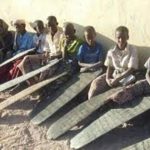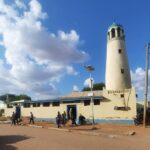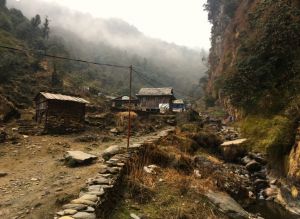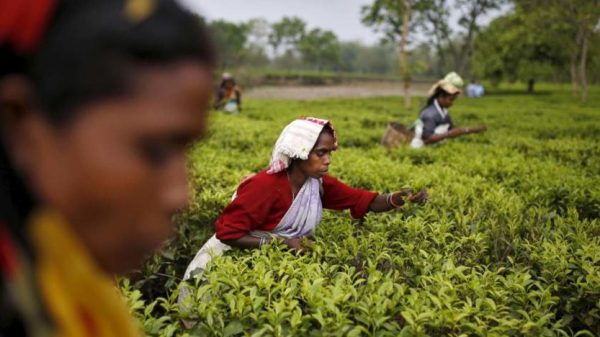By Abdullahi Jamaa
In one of the worst of seasons yet, Mahat Hassan carries one of his weak calves on a donkey cart to a watering point at remote hamlet of Wajir-Bor in Wajir county.
Beside him, the calf swings its head from side to side as the donkey waddles towards one of the many drying wells in the village. The sweltering heat here is a testimony of the biting season that has ravaged most of the Muslim-dominated region.
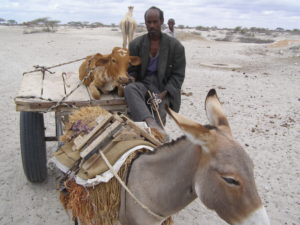
Staring into a beeline of herders waiting for water at one of the wells, Hassan’s eyes that rested on his frowned face closes occasionally to escape gusts of wind that blew sand from the treeless earth onto his tired frame.
“We are now at the peak of another drought” said Hassan “the animals are dying once again, this time water is our biggest worry because most of the wells in the village have completely dried up and the remaining ones are on the verge of doing so,” he added.
The current crippling drought that has hit this remote village comes hot on the heels of another ravaging one in 2006 that claimed more than 80 percent of his herd of cattle.
The family of this longtime herder has had to rely on just 50 cows this season. Much to his dismay, he is a worried man as this herd has started plummeting once again.
“In the previous drought I lost 160 cows, I fear to lose the remaining few” he said “I know the dry season is getting tougher every passing day”
Over the past two decades, all he has been seeing is a repeated cycle of droughts that has spelt misery for his traditional pastoral way of survival. Most parts of northeastern Kenya have not had good rainfall for several seasons, forcing many herders to cross into neighbouring Ethiopia and parts Somalia.
About 15 years ago, Hassan was an affluent pastoralist with 500 heads of cattle, 300 goats, and 200 camels.
“This was when rains were abundant, our animals were very productive, and we were never worried like we are now” he recalls the good old days.
But, because of climate change, the lifestyle of his predominantly pastoral community that continued for centuries is now at risk. The weather patterns have become unpredictable with returning droughts.
So, Hassan’s family is surviving on the edge. Pastures are dwindling by the day and temperatures soaring close to 40 degrees Celsius. The strain on the few water sources, mainly boreholes, has been enormous. The threat of conflict over water resources looms large than ever before.
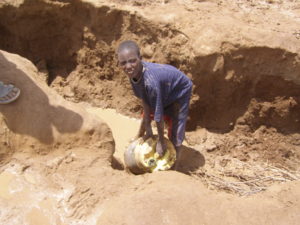
Photo/Abdullahi Jamaa/2009
The environment in his locality is warming more than it used to, putting the Somali community in the front line of global climate change.
These days, Hassan has lost count of how many times his livestock have been wiped out by successive dry spells due to unprecedented shifts in seasons.
“Some years back we used to know when it will rain, because we knew the seasons like the back of our hands” he says “These years, harsh seasons are common for us, the rains are no longer predictable”
But he is not alone, similar situation is facing thousands of Muslim herders in this region of the East African county. The Kenyan government has started an ambitious emergency livestock off take programme that will see pastoralists sell their weakest animals to the government.
In countries like Kenya, Ethiopia, Somalia and Djibouti, Nomadic families are groaning under the weight of paralysing effects of climate change. It is becoming much harder to tend livestock as the threat of losing one’s entire stock becomes automatic owing to the changing weather patterns.
“In this region, pastoralism is getting threatened,” said villager Ahmed Idris. “Every year our land is dry and animals are reducing in number, some people have already lost confidence of herding, opting instead to settle as refugees in urban centers and relying on relief food”
Residents are sounding alarm bells as the threat gets reds in tooth and claw.
In the Horn of Africa region, millions of families are desperate for food and water. Several seasons of failed rains is slowly turning into a major catastrophe. In Kenya thousands of livestock have been lost to the current season.
Global warming triggers wave of drought disasters and East Africa’s poorest are the most fragile to the shifting of seasons.
The continent contributes little to the greenhouse gas emissions blamed for warming, but has been hit hardest by the droughts, floods, heat waves and rising sea levels.
The effect of climate change in the continent translates into an impending humanitarian crisis for 75 to 250 million people by 2020. The overwhelming majority will be exposed to increased water shortage.
The glaring patterns of warming demonstrate how severe the impact of human-induced global warming may be for some of the poorest countries on the planet.
Climate experts say, the continent continues to bear the bulk of the burden, with home to 15 of the 20 most vulnerable countries in the world.
Pressure groups and campaigners are calling for a bold campaign to include developing countries most affected by global warming in the decision making process.
For now a decision by world leaders to strike a deal to stop global warming could probably be the last chance for the continuity of herding animals, an ancient practice that is now slowly being wiped out.
And for Hassan the herder, climate change is a real threat that is making pastoralism difficult. “Death is around the corner for us, every time we see our animals are dying” he finally said.
Editor’s Note: This story was previously published in 2009




